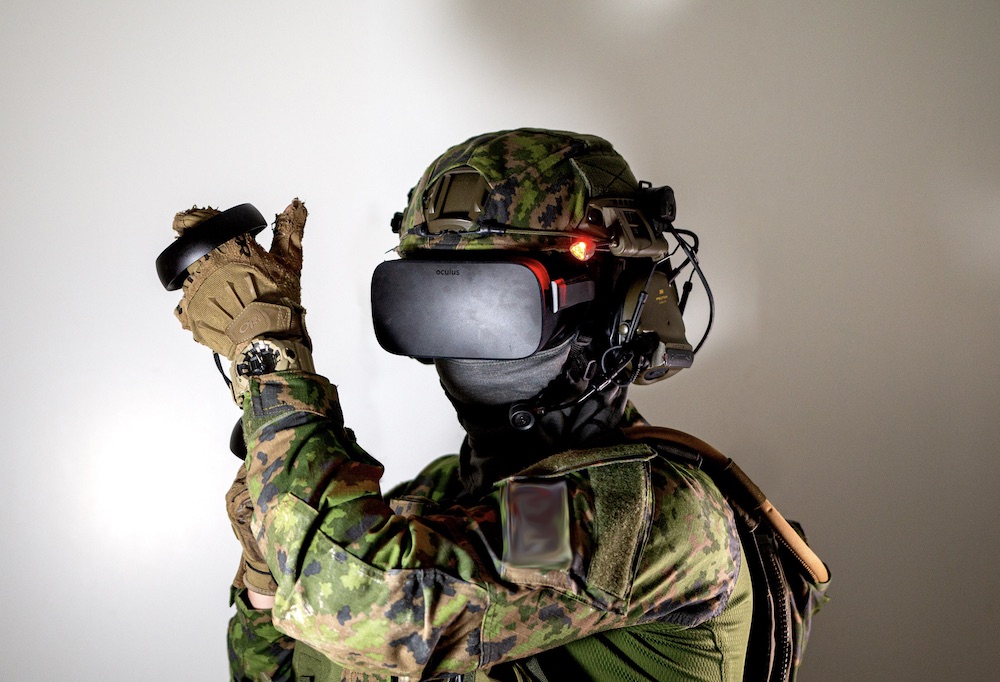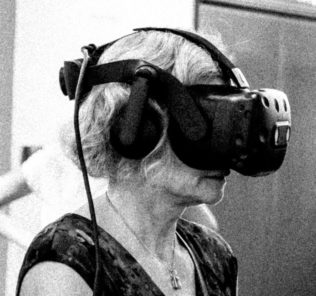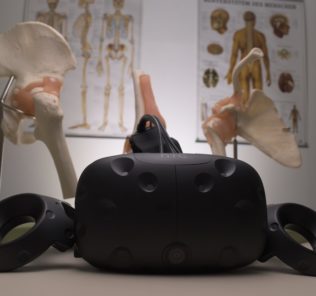Expanding Roles of AR & VR Across Medical Simulation Military Training
Just as medical learners are able to use surgical simulation to train for real-life procedures later in their careers, military personnel are now turning to clinical simulation and the use of augmented reality (AR) and virtual reality (VR) to heighten preparedness levels. As these professionals can be faced with life-or-death scenarios, completing comprehensive training can make a world of the difference. To assist governments in successfully deploying medical simulation training efforts, a number of institutions, facilities, and vendors have committed to helping find new ways to advance the military simulation resources available. This article shares how AR and VR tools are offering military members effective simulation training experiences.
Ultimately, these experiences are designed to provide learners with hands-on instruction that offers them a glimpse into what battlefield trauma and critical care scenarios look like. Through AR and VR, simulated scenarios can provide personnel with added knowledge and awareness to help later guide them in making clear-headed decisions in the field. This is especially important as, without proper training, the high-stress environment often involved in combat can impact one’s ability to provide care.
Further, military simulation through VR simulation and AR simulation allows learners and personnel to test their techniques and make mistakes in a risk-free environment, where no lives are at stake. Just as clinical simulation used in medical school has been proven to help reduce medical error, governments have come to recognize the necessity of this learning method as well. From gunshot wound treatment to mass casualty preparedness, military personnel now have the option to experience a wide range of simulated military experiences. Plus, VR and AR add a whole new element of realism, capable of being experienced from anywhere and at any time.
Sponsored Content:
Examples of AR/VR Use for Military Simulation Training
Gordon Center Studies Army Trauma AR Teletraining: In 2020, the University of Miami’s Gordon Center for Simulation and Innovation in Medical Education conducted a four-month study funded by the Defense Health Agency to examine the effectiveness of teletraining that leverages AR, according to National Defence Magazine. The study involved about 30 participants including personnel from the Army Trauma Training Detachment and examined whether teletraining with augmented reality could be used to teach a new, complex procedure to a group of paramedics.
“The background to this is that the DoD is faced with really the same challenges that we all are in health care, which is not enough faculty to be able to train all the people that need to be trained,” Dr. Ivette Motola, a specialist in emergency medicine with the University of Miami Health System, said in the article. “And so it was in some ways a proof of concept — can we do this effectively remotely?”
Motola further shared that the features the learners found most useful were the ability to interact and receive guidance and feedback live from the instructor, and the anatomic landmarks of the AR with the step-by-step animations. She added that the instructors identified as most useful the high-quality of the [audiovisual technology], along with the presence of the anatomy, to be able to ensure that the learner is performing the right actions in the correct location.
Sponsored Content:
Singapore Armed Forces (SAF) Considers AR Tools to Support Pandemic Training: According to The Straits Times, the greater use of simulators and augmented reality tools to support Singapore Armed Forces (SAF) training is being studied by the country’s Defence Science and Technology Agency (DSTA). The agency’s chief executive Mervyn Tan shared that he believes this use could potentially be scaled up to be used in large-scale pandemic-readiness exercises in land-scarce Singapore. Showcasing the country’s readiness efforts to date, in November 2020, a “pandemic-ready” medical center was opened at Tengah Air Base, trialing technologies such as telemedicine and self-service lockers for dispensing medicine. Yet, Tan believes more virtual training tools are a worthwhile investment.
Subscribe for More Great Military Medical Simulation Content!
VR Headsets Help Clinicians Diagnose Soldier Concussions: The U.S. Department of Defense and the Walter Reed National Military Medical Center’s National Intrepid Center of Excellence have been using the SyncThin system to diagnose concussions in soldiers, according to the American Business Journals. Using virtual reality headsets to stimulate and track patients’ eye movements, the company’s software — dubbedEye-Sync— looks for those known irregularities to help physicians diagnose ailments. The article shares that the company has also been conducting numerous clinical trials testing the effectiveness of its technology in identifying particular conditions, including attention deficit hyperactivity disorder. The Food and Drug Administration gave SyncThink approval for clinicians to use Eye-Sync as an aid to diagnosing concussions in October 2021.
SIMETRI CEO Says VR Simulation Increases Medic Training Repeatability, Opportunity: In an article on MachineDesign.com, Angela Alban, the CEO of SIMETRI, explains how human patient simulators and life-imitating technologies enable frontline workers, including military medics, to respond with confidence in emergency situations. Alban explained that most instructors within the military are interested in the standalone model, but there are some who are doing more advanced training and want to digitally connect the device to a manikin. When it comes to manikins, however, Alban asserts that the greatest value in medical simulation is patient safety and team training. She notes that, within the military, there’s a significant opportunity for point-of-injury care and even prolonged care, which is a scenario where participants are not necessarily a physician, but they are taking care of a patient as a paramedic or a special operations medic for a prolonged period of time.
“Imagine a scenario where you’re in the military and doing the procedure in the dark,” explained Alban in the report. “This is very quickly done on the head of the humerus; you can push fluids through within 30 sec. and with a much higher volume than through any other means. It was a particular procedure that they were not able to train with accurate anatomical models; they were using other means to train.”
Learn More About Military Simulation Training
Lance Baily, BA, EMT-B, is the Founder / CEO of HealthySimulation.com, which he started in 2010 while serving as the Director of the Nevada System of Higher Education’s Clinical Simulation Center of Las Vegas. Lance also founded SimGHOSTS.org, the world’s only non-profit organization dedicated to supporting professionals operating healthcare simulation technologies. His co-edited Book: “Comprehensive Healthcare Simulation: Operations, Technology, and Innovative Practice” is cited as a key source for professional certification in the industry. Lance’s background also includes serving as a Simulation Technology Specialist for the LA Community College District, EMS fire fighting, Hollywood movie production, rescue diving, and global travel. He and his wife live with their two brilliant daughters and one crazy dachshund in Las Vegas, Nevada.
Sponsored Content:


















